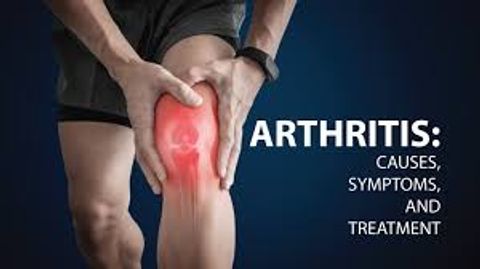The Ultimate Guide to Spa Saunas
Spa saunas are enclosed heated spaces designed for relaxation, wellness, and therapeutic purposes. They have existed for centuries, with origins traced to Finnish culture, where sauna bathing was both a health ritual and a social tradition. Over time, saunas spread globally, adapting to different cultural practices and technologies.
Modern spa saunas typically use dry heat, steam, or infrared heating systems. They are commonly found in wellness centers, gyms, hotels, and private homes. The main idea behind saunas is to expose the body to heat in a controlled environment, promoting relaxation, circulation, and overall well-being.

Importance
Spa saunas matter today because they contribute to both physical and mental health in ways supported by wellness research. They:
-
Support relaxation by reducing stress and calming the nervous system.
-
Improve circulation through exposure to heat, which dilates blood vessels.
-
Aid muscle recovery for athletes and fitness enthusiasts.
-
Encourage detoxification by stimulating sweating, which helps the body release impurities.
-
Enhance mental well-being by promoting rest and providing a meditative environment.
These benefits affect diverse groups — from individuals managing stress, to athletes needing recovery support, to wellness enthusiasts looking for preventive health practices. The widespread appeal of saunas lies in their ability to solve everyday issues related to relaxation, recovery, and stress management in a natural, accessible way.
Recent Updates
The spa sauna sector has seen noticeable innovations and trends over the past year, reflecting broader changes in the wellness industry. Some key developments in 2024–2025 include:
-
Infrared saunas gaining popularity (2024): Unlike traditional steam or dry heat saunas, infrared saunas use light waves to heat the body directly. They are reported to provide similar wellness effects at lower temperatures.
-
Integration of technology (2025): Smart controls and mobile apps now allow users to personalize sauna sessions, adjusting temperature, humidity, and session duration.
-
Focus on sustainability (2024–2025): Eco-friendly sauna materials and energy-efficient heating systems are increasingly in demand, aligning with global sustainability goals.
-
Hybrid spa experiences (2025): Many wellness centers now combine saunas with other therapies such as aromatherapy, sound baths, and light therapy for a more holistic experience.
-
Medical research expansion (2024): Studies are investigating the link between regular sauna use and reduced cardiovascular risks, drawing more attention to their potential role in preventive health.
Laws or Policies
Regulations and guidelines around spa saunas vary depending on the country and type of facility. These policies exist to ensure user safety, hygiene, and energy compliance. Common frameworks include:
-
Building and safety codes: Many countries require proper ventilation, fire safety measures, and temperature controls in spa and sauna installations.
-
Health regulations: Public spas and wellness centers must follow sanitation standards to prevent the spread of bacteria and ensure safe environments.
-
Energy efficiency policies: In Europe and parts of North America, regulations encourage or mandate the use of energy-efficient heating systems in saunas.
-
Occupational guidelines: Staff working in spas with sauna facilities are often required to undergo safety and health training.
-
Cultural and local standards: For example, Finland, where sauna culture is deeply rooted, includes sauna use in national health guidelines, emphasizing both wellness and tradition.
Tools and Resources
Several helpful resources exist for individuals, spa operators, and wellness researchers interested in saunas:
-
Mobile wellness apps: Many apps such as Calm and Headspace provide guided relaxation that can complement sauna sessions.
-
Temperature and humidity monitoring tools: Digital devices help ensure saunas operate within safe and effective ranges.
-
Research databases: PubMed and Google Scholar provide access to studies on the health benefits of sauna use.
-
Wellness blogs and portals: Platforms like the Global Wellness Institute publish reports on spa trends and innovations.
-
Safety checklists and guidelines: Local government health departments often provide downloadable guides for sauna operation and maintenance.
FAQs
What are the different types of spa saunas?
The main types include traditional Finnish saunas (dry heat), steam rooms (moist heat), and infrared saunas (light-based heating). Each type offers slightly different experiences and benefits.
How long should a typical sauna session last?
Most experts recommend 10–20 minutes per session. Longer exposure should be avoided to prevent dehydration or overheating.
Are spa saunas safe for everyone?
Generally, healthy adults can use saunas safely. However, individuals with cardiovascular conditions, respiratory issues, or pregnancy should consult a healthcare provider before using them.
What is the difference between a steam room and a sauna?
A steam room uses moist heat with high humidity, while a sauna uses dry heat or infrared heating. Both promote relaxation but provide different physical experiences.
Do spa saunas have proven health benefits?
Research suggests that sauna use may improve cardiovascular health, reduce stress, and aid in recovery. However, benefits vary by individual and should not replace medical treatment.
Conclusion
Spa saunas are more than just a place for relaxation — they represent a longstanding wellness tradition that has evolved into a modern health practice. From traditional Finnish steam rooms to cutting-edge infrared saunas with smart controls, the world of spa saunas continues to adapt to cultural trends, scientific research, and sustainability goals.
As global interest in wellness grows, saunas remain a trusted way to combine relaxation, recovery, and preventive health in one practice. Whether used in community wellness centers, gyms, or private spaces, spa saunas continue to offer individuals an accessible path to balance and well-being.






